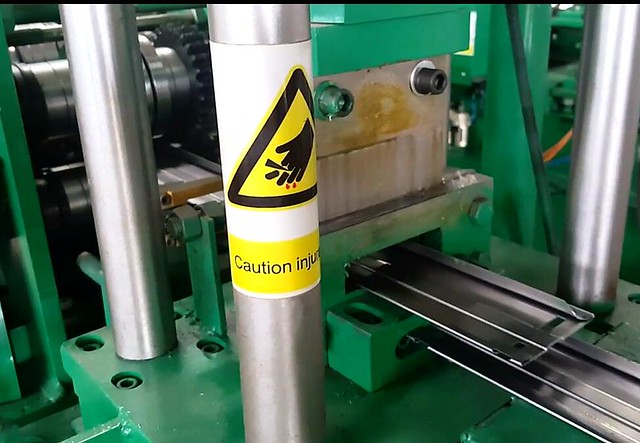Manual Chain Hoists
Manual chain hoists are used in a variety of industries and applications to lift and move heavy equipment. They’re especially useful for rigging in environments where power is limited or unavailable.
Hoists have a maximum capacity, and it’s important to keep your loads within that range to prevent damage or injury. To help you determine the best manual chain hoist for your needs, consider these factors.
Lifting Capacity
Hoist capacity is the amount of load a manual chain hoist can lift. Unlike an overhead crane, which uses a force multiplier to elevate enormous loads in manufacturing and transportation industries, manual hoists use a mechanical advantage that requires little power from the user. They’re perfect for smaller venues and applications requiring temporary or infrequent usage or when no power source is available.
When the operator pulls down on manual chain hoists the hand chains, it turns the chain wheel inside the gearbox and moves the cog to rotate the drive shaft and gears that move the load chain sprocket and lifting hooks. Then, the load is lifted up to the desired position using the steel hooks on the end of the load chain.
Depending on the rated load, some hoists feature brakes to prevent unintentional lowering. They also have swivel hooks to make it easier to maneuver loads in confined spaces.
For rigging jobs that require high performance, choose a premium model hoist with top-of-the-line quality components. These are designed with total cost of ownership in mind and can withstand rugged, day-in, day-out use. They’re built with stronger materials like stainless steel to resist corrosion and come with a warranty. Some models are even spark resistant to meet the needs of hazardous environments. These hoists are available in a range of sizes to accommodate most lifting applications. You can also purchase optional accessories like plain or geared beam trolleys, beam clamps and hoist test stands to get the most out of your new manual chain hoist.
Weight
Unlike electric hoists, which require a power source to operate, manual chain hoists are powered by hand chains. They are used in many environments including construction, fab shops, warehouses, and manufacturing facilities. They provide a true vertical lift for loads that need to be positioned with precise control and no lateral movement.
In order to operate a manual chain hoist, operators simply pull the hand chain and engage the gear system to raise or lower a load. They can also attach wire rope slings and other attachments to the hoist’s lower grab hook for transporting large loads across long distances.
Additionally, since there is no power to operate an electric chain hoist, a manual chain hoist can be operated from almost any position in the workspace. This allows workers to operate the hoist from directly below a load or even from above it, depending on the model.
Whether your business is in the steel industry, aerospace, transportation or building structures, a manual chain hoist can help you elevate enormous loads with minimal effort. It can be a powerful force multiplier in your operation. In addition, these units are durable and built to last, making them a smart investment for businesses that frequently use the equipment. For example, most manual chain hoists feature a weather proof Weston brake and all gears run on roller bearings for smooth controlled operation as well as maintenance free lubrication.
Safety
Similar to many other types of equipment, manual chain hoists require regular maintenance and inspection. This ensures that they are working properly and is essential for safety. It also helps to prevent costly repairs and downtime in the future. Some routine maintenance includes regularly cleaning the chain to remove grit and rust, and oiling it to keep it flexible and moving smoothly. Depending on the size of your hoist, and how often it’s used, you may need to dismantle it for cleaning and servicing once or twice a year.
Operator qualification is another important aspect of manual chain hoist safety. A properly trained and qualified operator will have good hand/eye coordination, depth perception and spatial orientation, which can help them safely operate the device. It is also crucial to train workers on the specific hoist that they will be using, including information about its capacity ratings and maintenance requirements.
In addition, operators should perform daily and frequent hoist inspections before beginning work, while periodic and more detailed inspections should be performed at regular intervals. These inspections should include an examination of the operating mechanism, limit switches, hooks and latches, wire rope and lifting media (chain or rope). Any damage or malfunction noted by an operator should be immediately reported to maintenance, and the equipment tagged out of service until it can be repaired.
Maintenance
As simple as they may seem, manual chain hoists can provide an enormous amount of flexibility when it comes to moving heavy objects. They have brakes to prevent unintentional lowering, steel hand chains and lifting chains that can hold huge loads, and the entire mechanism is reliable even when you need to move something in a tight spot.
They don’t need electricity either, which makes them a manual chain hoists cost-effective option compared to electric or hydraulic hoists. Plus, they’re usually much lighter in size than their fancier counterparts too.
Despite their many advantages, these hoists are still not without their faults. They can experience a lot of wear and tear over time, especially with frequent usage, which is why it’s crucial to conduct regular inspections to ensure they continue to work correctly. Here’s what experts from two different companies – LGH, a crane and hoist rental company, and Tiger Lifting, a global manufacturer of hoists – have to say about the importance of maintaining these devices.

